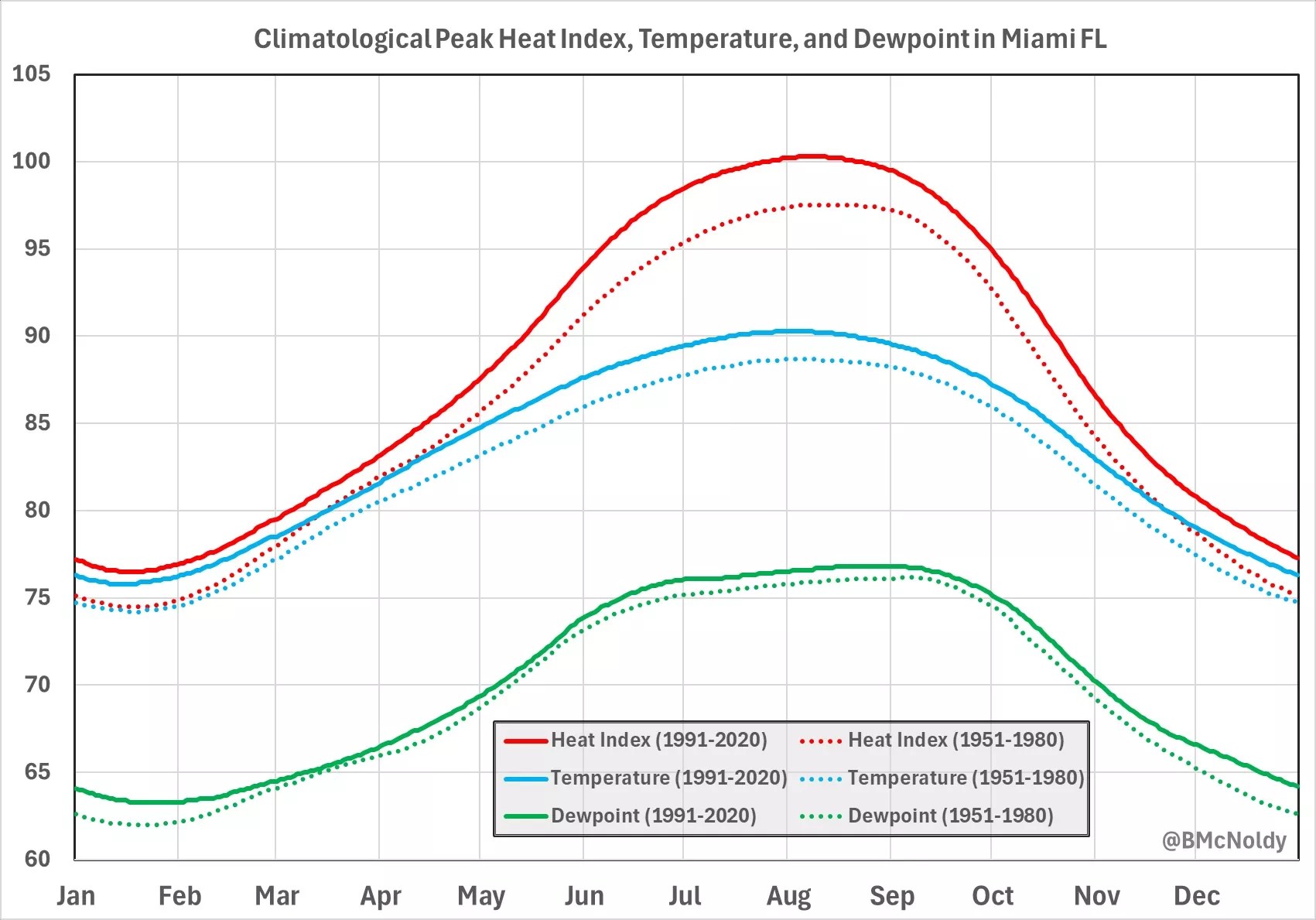
Photo by Artur Debat/Getty Images Stock

Audio By Carbonatix
With Labor Day in the rearview mirror and the calendar motivating toward what most people call fall, one might be tempted to hope the scorching Miami summer is finally on the wane.
Unfortunately, that is not the case.
The unbearable heat typically continues until mid-October, according to New Times‘ go-to meteorologist Brian McNoldy, a senior search associate at the University of Miami Rosenstiel School of Marine, Atmospheric, and Earth Sciences.
That is not great news for Miamians who’ve been grappling with unbearable temperatures since long before summer officially started.
This year, make your gift count –
Invest in local news that matters.
Our work is funded by readers like you who make voluntary gifts because they value our work and want to see it continue. Make a contribution today to help us reach our $30,000 goal!
In May, the water temperature measured at Virginia Key off of Key Biscayne was hitting peak summer highs more common in July and August – all thanks to the record-breaking heat index, AKA, the “feels-like temperature.” The heat index reached 112 degrees in May, nearly a month before the June 20 summer solstice.
From there on out, South Florida residents have been bombarded by (sometimes daily) heat advisories, warning that the feels-like temperature could hit or exceed 105 degrees and cause heat illness. Miami has been smashing records left and right in the temperature and heat-index departments all summer long.
Wow. At 3pm, #Miami just set a new record high temperature (98°F) and a new record high heat index (110°F) for the date today. 🥵 🥵
— Brian McNoldy (@BMcNoldy) August 15, 2024
The previous records were 97° and 107°.
McNoldy tells New Times the Magic City has already hit its highest temperature on August 2, heat index on August 8, and dew point on August 8.
“But the decrease is painfully gradual after those dates,” McNoldy notes.
Based on McNoldy’s tweeted chart (embedded below this paragraph) for Miami’s climatological peak heat index, temperature, and dew point from 1991 to 2020, the peak heat index begins to fall below 100 degrees at the beginning of September and reaches 95 degrees by October. The average daily high temperature, which peaked at 90 degrees in August, gradually decreases through September, eventually sinking to 85 degrees on October 19.
Happy Heat Index Hump Day, #Miami!
— Brian McNoldy (@BMcNoldy) August 8, 2024
(We have to wait a bit longer for Dewpoint Hump Day though) pic.twitter.com/wCn0djlG5q
McNoldy notes that, on average, the afternoon peak heat index has dropped to 90 degrees by October 20. As far as lows, he adds, the average low heat index first falls to the 80-degree mark on September 24, and the average low temperature will likely first drop to 75 degrees around October 15.
It wasn’t always this way. Spoiler alert: It’s getting – and feeling – hotter.
To better illustrate this development, McNoldy made New Times a chart that adds a second set of “climate normal” averages, aggregating the years 1951 to 1980.

A chart comparing heat index, dew point, and temperate in the climate normals of 1951 to 1980 and 1991 to 2020.
Chart by Brian McNoldy
The chart shows that “summer” spanned 138 days in the first “climate normal” versus 159 days in the second. As defined by the National Oceanic and Atmospheric Administration (NOAA), climate normals are 30-year averages for climate variables.
What’s more, the new “climate normal” shows 96 days when the minimum heat index failed to drop below 80 degrees. From 1951 to 1990, there were zero such days.
“Not surprisingly, the lows are creeping up too,” McNoldy adds.
It appears summer temperatures will be sticking around far longer than anyone hoped.
“On average, mid-October is a good time to proclaim the end of summer here,” McNoldy tells New Times.